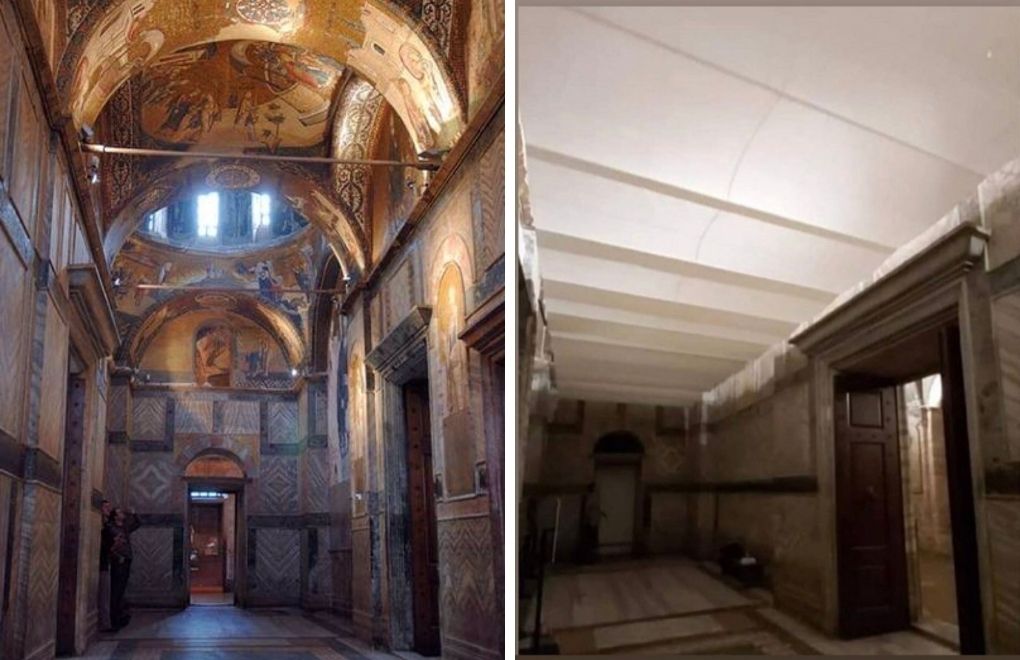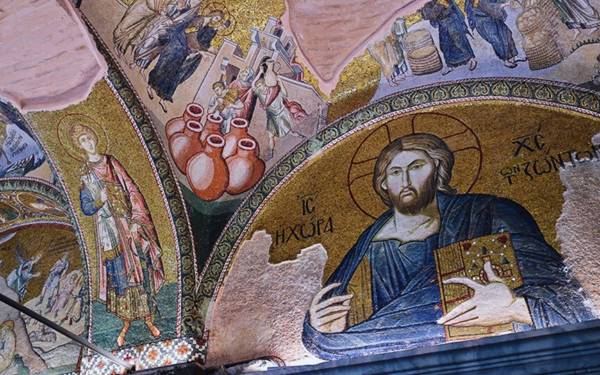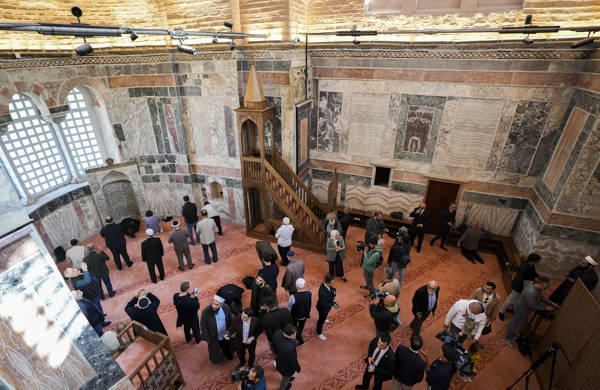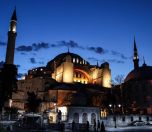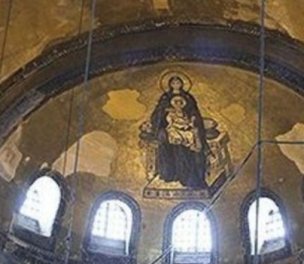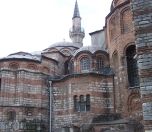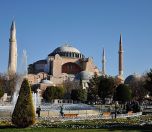Click to read the article in Turkish
Following a Presidential Decree that foresees the opening of Chora Museum to worship as a mosque, the images of Jesus Christ, frescoes and icons in the museum have been covered up with a white curtain.
Located in today's Fatih district in İstanbul, the building was constructed as a monastery in 534 during the Byzantine period. After İstanbul was taken over by the Ottomans in 1453, it was converted into a mosque in 1511, just like Hagia Sophia in İstanbul. Serving as a mosque for 434 years, it was converted into a museum by a Council of Ministers decree in 1945, after the Republic of Turkey was established in 1923.
İstanbul Metropolitan Municipality (İMM) Vice Secretary General Mahir Polat has announced it on Twitter, indicating that "the covering of frescoes and mosaics of the Chora, one of the masterpieces of the world history of art, will destroy the character and artistic value of the building."
Polat has compared the before and after of the Chora in two pictures, attaching the note, "The project [is undertaken by] the ministry and its institutions that manage and protect the cultural heritage of Turkey."
Dünya sanat tarihinin baş yapıtlarından Kariye fresk ve mozaiklerinin kapatılması ne yazık ki yapının karakterini ve sanatsal değerini öldürecek vasıfısızlıkta.
— Mahir Polat (@mhrpolat) October 27, 2020
Solda eski hali, sağda yeni hali. Proje Türkiye kültür mirası yöneten ve koruyan bakanlık ve kurumları. pic.twitter.com/ijItpmLxCz
Friday prayer on October 30
It was previously decided that the Chora Museum be handed over to the Presidency of Religious Affairs and opened to worship as a mosque.
President of Religious Affairs Ali Erbaş has announced that the building will be opened to worship following the Friday prayer on October 30.
About the Chora MuseumIt was originally built as part of a monastery complex outside the walls of İstanbul, to the south of the Golden Horn, in 534. Literally translated, the church's full name was the Church of the Holy Saviour in the Country. The majority of the fabric of the current building dates from 1077–1081. Early in the 12th century, the church suffered a partial collapse. Around fifty years after İstanbul was taken over by the Ottomans, Atık Ali Paşa, the Grand Vizier of Sultan Bayezid II, ordered the Chora Church to be converted into a mosque. The word Kariye derived from the Greek name Chora. Due to the prohibition against iconic images in Islam, the mosaics and frescoes were covered behind a layer of plaster. This and frequent earthquakes in the region have taken their toll on the artwork. In 1948, Thomas Whittemore and Paul A. Underwood from the Byzantine Institute of America and the Dumbarton Oaks Center for Byzantine Studies, sponsored a restoration program. From that time on, the building ceased to be a functioning mosque. In 1958, it was opened to the public as a museum. In 2005, the Association of Permanent Foundations and Service to Historical Artifacts and Environment filed a lawsuit to challenge the status of the Chora Church as a museum. In November 2019, the Council of State, Turkey's highest administrative court, ordered that it was to be reconverted to a mosque. * Source: Wikipedia |
(TP/SD)




